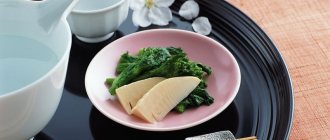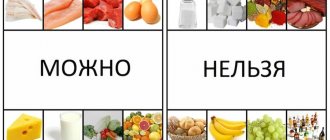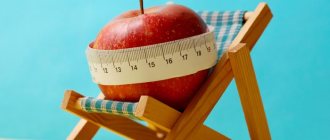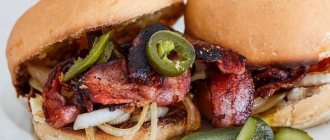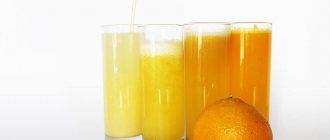The Japanese are considered one of the most slender nations of the world. They already know a lot about healthy, moderate nutrition, and they know how to keep themselves in shape throughout their lives. The Japanese owe their slimness to correct approach to nutrition issues and dietetics.
Quick navigation through the article:
- Principles of the Japanese Diet
- Diet rules
- Menu for 14 days
- Reviews with photos
- Video
They eat small portions, do not accept fatty foods , which are common in America and Europe, and eat large amounts of low-calorie foods. simple Japanese dishes are passed down from generation to generation and are used throughout Japanese culture.
What is the Japanese diet for 13 days?
When you see the name of this diet, the first thing that comes to mind is the traditional Japanese diet: raw fish, rice, light soups, specific seasonings. And indeed, compared to Russian or French cuisine, this could be considered a diet menu. But the Japanese diet, designed for 13 days, is a much more strict weight loss system, and its menu does not even intersect with Japanese cuisine. Its name was given, rather, by the famous fortitude of the Japanese samurai, who could not be broken by temptations and hardships. After all, going on this diet is really quite difficult. Habitual products will be banned. You will not be able to afford even small quantities:
- Flavoring additives, even salt;
- Baked goods and other carbohydrate treats;
- Alcoholic drinks, even the weakest;
- Any tasty indulgences.
The 13-day Japanese diet is designed for significant weight loss in a fairly short period of time. This is achieved by a perfect balance of products and strict adherence to all rules and regulations. You will have to prepare in advance for this test.
- During these 13 days, your menu will be spelled out in detail, and deviating from it will be strictly prohibited. You cannot replace products, even if you think that the replacement is justified or the difference between the products is very insignificant.
- The amount of food is also strictly prescribed. You can neither increase nor decrease portions.
- You will have to completely abandon spices and flavorings. At first it will be difficult to come to terms with their absence; unsalted food may seem tasteless and dull. But after a few days, your receptors will get used to the seasonings and you will begin to feel the pure taste of foods, learn to enjoy each of them.
- It is best to start reducing the amount of salt a few days before entering the diet so that the body does not feel a sharp jump. This will make the diet much easier to endure. On the day before it starts, consume salt in reduced quantities, and have dinner with a light vegetable salad without spices.
- Nutrition during the diet will be quite meager and you may feel some weakness. It is not recommended to play sports during this period. Move as far as you feel comfortable, in moderation. However, the more calories you burn while dieting, the bigger and more lasting the weight gain you'll get.
- In addition to the 13 days of the diet itself, approximately the same period of adaptation awaits you - the transition to a daily diet. To prolong the effect of the diet and get the maximum benefit from it, it is recommended not to try to return to the old diet. Try to switch to proper nutrition: continue to eat lean protein foods and fresh vegetables, replace sweets with fruits, forget about fatty sauces, add a minimum of salt to your food. Immediately after the diet, it will be much easier and tastier for you to eat right, and the longer you do this, the longer your figure will remain slim.
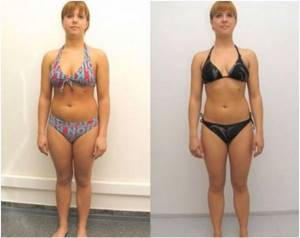
Due to its strictness, scarcity and low content of carbohydrates and salt, Japanese food has a fairly large list of contraindications. Be sure to talk to your doctor about whether it is right for you. While following a diet, it is also recommended to visit a doctor to monitor the condition of the body.
Drink as much water as possible. A body that often suffers from dehydration is more prone to swelling. In addition, when there is plenty of water in the body, blood circulation, the functioning of all organs, and the quality and color of the skin improve.
Losing weight using a Japanese salt-free diet for 13 days takes place in 3 stages:
- First, excess salt is removed from the body. The water that it retained in the body also leaves. This is the very first small plumb line. At this stage, swelling disappears, blood circulation and metabolism improve. Body volume is slightly reduced.
- Then the body starts burning its own fat reserves due to the fact that the energy received from food is not enough for the body. There is enough water, the necessary minimum of vitamins is present, so in general the body works perfectly and metabolic processes proceed as expected.
- A person gets used to eating small portions and enjoying the taste of proper, healthy food. The volume of his stomach decreases to accommodate the new volume of portions. As a result, the stomach becomes flatter.
The Japanese diet requires drinking coffee every day. If your body allows it, do so; in this diet it has very important functions, for example, it normalizes blood pressure and speeds up metabolism. Instant coffee is allowed, but the effect will be much greater if you brew a natural grain drink. If you are prohibited from drinking coffee for health reasons, replace it with green tea. This is the only exception to the “do not substitute for prescribed products” rule.
Return to content
Conclusion
The Japanese diet, judging by the description, is strict, but extremely effective for losing weight. It focuses on a strong reduction in proteins, fats and carbohydrates, which confirms its effectiveness. But before you start sticking to it, you need to be sure of your health. If there are no problems with this, then it will be an excellent option for quickly burning fat.
Reader’s story “How I lost 18 kg in 2.5 months” I’ve been fat all my life and suffered from excess weight. In clothing stores I chose size L, which by the age of 25 turned into XL and continued to grow. I can tell you for a long time how I tried to fight my 30-35 extra pounds: diets, hunger strike, physical activity, even pills and some kind of conspiracies. The effect was short-lived or absent altogether. In short, despair, depression and almost resignation to one’s enormous weight. But one day I came across... a chocolate bar that helps you lose weight! It didn’t cost me anything to try it - I love chocolates. I ordered it and ate it. And the weight crept down!! It seems like mysticism, but it's true. I began to study the issue and realized how it all works. Girls, try it! I have already lost 18 kg in 2.5 months. And I continue. It's up to you, but you don't lose anything except weight, of course. Try Choco Burn chocolate for weight loss for 147 rubles.
Doctors' opinion on a salt-free diet
The Japanese diet, designed for 13 days, gives good results, but requires care and concern for health. Doctors believe that it is worth sticking to such a diet once every one and a half to two years, so that the body has time to recover and function well. Too much salt deprivation can cause problems in some organs.
The diet provides the body with a small amount of vitamins, but in order to support the body and not deteriorate the quality of skin, nails and hair, experts recommend taking a multivitamin complex during this diet.
A diet so low in carbohydrates and low in calories can cause stress on the body. Therefore, it should be carried out only with the permission of your attending physician, under his guidance. There are a number of diseases for which this diet is strictly prohibited - this includes, for example, heart disease or eating disorders. Mothers cannot hold it back either, as long as the child’s nutrition is at least slightly connected with their body.
Return to content
Contraindications
People who are slightly overweight should not go on such a low-fat diet. You can get severely exhausted. It is more suitable for those who have a lot of excess weight.
Pregnant and nursing mothers should not follow strict diets at all. But if a strong desire to lose weight haunts you, then you can choose a gentle Japanese diet menu plan and increase the amount of fish and meat. In any case, you need expert advice.
Important: The Japanese diet is not suitable for people with intolerance to the foods listed on the menu.
Menu for the Japanese diet for 13 days
Every day there must be 3 meals.
For breakfast there is always a small mug of coffee without sugar, without cream, without spices. Sometimes a small cracker of rye bread without raisins is added to it, sometimes the coffee is replaced with a small portion of grated carrots with a couple of drops of lemon juice.
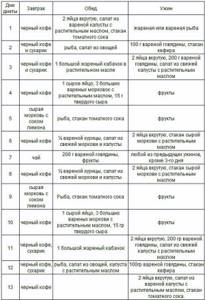
The menu mentions the diet's two main salads: Osaka salad and Oita salad. The first consists of cabbage seasoned with a teaspoon of oil. Cabbage can be doused with boiling water to make it softer, but it is better to use fresh, crisp cabbage. The second is made from carrots - grated into small strips and also seasoned with a teaspoon of oil. A mixed salad consists of carrots and cabbage in approximately equal quantities.
Meat products can be baked in the oven or grilled, boiled, or steamed. All this without the use of oil or other additives, even the skin and fat from the products must be removed. You can also cook zucchini and eggplant when they appear on your menu. Other vegetables and fruits can only be eaten raw.
There is the same Japanese diet for 14 days. These diets are very similar, but there are some slight differences.
There is an excellent chemical diet for 4 weeks, the author of which is the doctor Osam Hamdiy. It is based on the use of chemical reactions occurring in the human body -.
Here it is written about the drug Glucophage Long, which also helps you lose weight and reduce your weight.
Before starting the diet, let us recall two main features of the Japanese diet:
- all food should be fresh. If you are unable to eat without salt, in the first days you can add a few crystals to the prepared dish. But by the second week you should still gradually reduce your salt intake to zero.
- You can’t change absolutely anything in the menu below if you want to achieve results.
- You should not start the diet abruptly; before starting it, eat lighter meals than usual for a couple of days and try to add less salt to your food.
Main meals should follow the following pattern:
Monday
- In the morning only coffee.
- For lunch, 2 eggs boiled to taste, Osaka salad and tomato juice, and for dinner, 200g of fish.
Tuesday
- In the morning, coffee with crackers.
- For lunch, fish and Osaka salad, for dinner, 100 g of beef and a glass of low-fat kefir.
Wednesday
- In the morning, coffee with crackers.
- For lunch, one large zucchini with skin on, for dinner, 2 eggs, 200 g of beef and Osaka salad.
Thursday
- In the morning only coffee.
- For lunch, 1 egg, Oita salad and a slice of unsalted low-fat cheese, for dinner, 2-3 unsweetened fruits.
Friday
- In the morning, carrots with a couple of drops of lemon juice, washed down with water.
- For lunch, a tomato and 200 g of fish, for dinner, 2-3 unsweetened fruits.
Saturday
- In the morning only coffee.
- For lunch, a whole skinned chicken breast, mixed salad, for dinner, 2 eggs and Oita salad.
Sunday
- In the morning, coffee with crackers.
- For lunch, 200 g of beef, and for dinner you are allowed to choose any from the past week, except for dense beef.
Monday
- In the morning only coffee.
- For lunch, chicken breast and mixed salad, for dinner 2 eggs and Oita salad.
Tuesday
- In the morning, carrots with lemon juice.
- For lunch, a tomato and 200 g of fish, for dinner 2-3 sour fruits.
Wednesday
- In the morning only coffee.
- For lunch, Oita salad, an egg and a small slice of cheese, for dinner, 2-3 sour fruits.
Thursday
- In the morning, coffee with crackers.
- For lunch, a large zucchini with skin, for dinner, 2 eggs, Osaka salad and 200 g of beef.
Friday
- In the morning, coffee with crackers.
- For lunch, 200 g of fish and a mixed salad, for dinner, 100 g of beef and a glass of low-fat kefir.
Saturday
- In the morning only coffee.
- For lunch 2 eggs, Osaka salad, tomato juice, for dinner 200 g of fish.
The period of quitting the diet begins on Sunday. Select the menu for any day of the diet and add a fruit or vegetable that was prohibited but that you wanted to eat. Continue to follow the instructions for exiting salt-free mode.
The Japanese diet for 13 days is classified as difficult for the body, and it will be possible to return to it only after one and a half to two years have passed. However, earlier this will not make sense, because if you followed all the rules, you have successfully lost excess weight and will not gain it in the coming years.
Return to content
A Tale of Promises and Delusions

Favorite words for “healthy lifestyle” fans: “cleanse” and “shake up.”
Everyone wants to “shake” the body, “stimulate” it, I come up with many ways to shock it, supposedly “for recovery.” Few people think that we have one body, and one health, and we need to treat this wealth of ours with care:
- maintain a balance in nutrition, and not rush from a glutton to a hunger strike;
- distribute physical activity evenly, and not sit for six months and then throw yourself into extreme exercises like dragging car tires over rough terrain, or intense training bringing yourself to the maximum permissible heart rate;
- initially, do not load the liver, pancreas and kidneys with refractory fats, trans fats, carbonated drinks and preservatives, and do not rush to drink glasses of lemon juice and vegetable oil “to remove stones”;
- observe basic hygiene rules, and not rush to dubious recipes “to remove parasites”...

I’m not even talking about the brutal struggle with meat, eggs and salt. As it turns out from numerous articles, the thirst to make a person look at food as an enemy will trail behind humanity until the end of the world, like a crocodiles tail. Unfortunately, no logic helps here.
Why do we forget that we need to initially protect ourselves from harmful excesses, and come to our senses when serious medical intervention is already required? But instead of going to the doctor, we rush headlong into the Internet and begin to grab at all the recipes, we just have to beckon with words like “Japanese”, “French”, “you will be like Marilyn Monroe”, etc.
When a person is in a desperate state, he grasps at any pseudoscientific nonsense, he can even be convinced that he cannot eat at all, but must lie down, fold his paws and not move. And he will lie down, firmly convinced that in two or three weeks he will become healthy, slender... In general, it would be nice to put him in a coffin and hammer the lid tighter.
Quitting the diet
Although this method of losing weight is called the “Japanese diet for 13 days,” you will have to restrict yourself in nutrition for much longer. After all, what could be more offensive than surrendering to the clutches of an uncontrollable glutton and, a week after a heroically completed diet, gaining more than your old weight? Only to get, along with the previous kilograms, a sudden metabolic failure.
During the Japanese diet, you remove a large amount of salt from the body and force it to work in an unusual mode, and if then a cocktail of fat, salt and spices suddenly enters the body, this will cause banal poisoning, the body simply cannot cope with the unaccustomed state.
Therefore, in order for the new weight to remain for a long time and the body to work well, exit the salt-free regime smoothly, following the rules:
- For the first days, eat according to the old diet menu. Only now you can choose the days you are going to repeat. Every day, eat 1 food that you love and will eat often after the diet.
- Continue to eat small portions. You can increase their number, but do not allow your stomach to stretch again under the onslaught of desired dishes.
- Drink plenty of water, just as you would during your diet. In fact, it is recommended to maintain this drinking regimen for life, because it is truly beneficial to the body.
- Try to return only healthy foods and your favorite ones to your diet. Try to consume as little sweets, fatty foods and baked goods as possible. Now you can do all this, but the less, the better for your body.
Expect that a smooth transition to your daily diet will take you at least a week, and ideally the same 13 days.
Return to content
Benefits of the system
If we are talking about the original Japanese diet, then it has much more benefits:
- Fish contains amino acids, healthy fats and protein. They have a good effect on a person’s well-being and appearance. Omega-3 acid promotes skin regeneration, strengthens hair and nails.
- Unprocessed brown rice is high in fiber. It helps to better absorb protein and removes waste and toxins from the intestines.
- Nori leaves contain iodine, which is deficient in every second person on the planet. By consuming these dried seaweeds, the deficiency can be overcome.
With the more familiar Japanese diet menu, the results are worse. This is an extremely extreme menu that is low in calories and nutrients. However, the game is worth the candle. With this diet, the kilograms will disappear before your eyes, and the benefits of the Japanese diet will outweigh its harm.
Recipes
Carrot puree
You will need:
- carrot;
- 1 tbsp olive oils;
- 5 grams of dried seaweed.
Boil carrots, cool, peel. Puree it with olive oil. Add 5 g of dried seaweed (instead of salt).
Baked zucchini
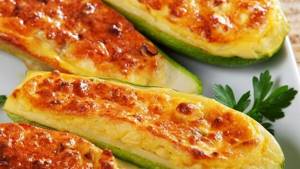
You will need:
- zucchini – 2 pcs;
- a little olive oil.
Wash one of the zucchini, cut in half, remove the seeds. Peel and grate the second zucchini. Sprinkle the boats with oil and place the grated zucchini inside. Wrap the boats in foil and bake at 180 degrees for 30 minutes.
Cabbage in tomato
You will need:
- white cabbage leaves;
- ground ginger to taste;
- 2 eggs;
- 1 liter of water;
- 1/2 tbsp. tomato juice.
Boil the eggs. Boil a liter of water with ginger, put cabbage leaves in it. Leave for 3 minutes, remove and cool. Grind eggs with tomato juice. Finely chop the cabbage and pour in the egg mixture.
Fruit salad “Obedenie”
You will need:
- apple;
- pear;
- kiwi;
- three or four pitted cherries.
Cut the pear and apple into strips. Grind kiwi and cherries. Arrange the apple and pear in layers on a plate. Pour in kiwi and berry sauce.
Useful tips
- It is very important to monitor the quality of the products used. For example, coffee must be natural. Do not use instant, it does not contain any antioxidants or other beneficial elements for your body.
- It is advisable to boil meat and fish, but they can also be cooked in the oven, steamer or microwave. If you want to fry, add a minimal amount of olive oil.
- It is advisable to use olive oil for preparing salads.
- The Japanese diet is not able to supply the body with vitamins and other useful elements, so it is very important to additionally take medications containing minerals and vitamins.
- And, of course, don’t forget about physical activity. Even if you don’t have the opportunity to exercise, at least do exercises in the morning and walk more.
The Japanese diet speeds up metabolism and effectively reduces weight. If you do everything correctly, the results will be noticeable from the second day. Everything depends on you.
How I lost weight - my review
It was 2001, I entered university. I just returned from sports camp. There, with fractional meals, fruits and jogging, I lost 4-5 kilos. I was in amazing shape then.
But in the fall there came terrible cold. The hot water was also turned off. The body began to ask for more warmth. And the body receives heat only from food. I had to lean more on carbohydrates. And within a month I recovered significantly.
I complained to one classmate about the kilos I had gained. She suggested going on a diet together. Moreover, it was a dispute - who would last longer. I agreed. She got the menu. So we started losing weight together.
The first 3 days were hard, but then a feeling of lightness came. During this time I lost 1.5 kilos. I ate 150-200 grams. This was enough, there was no feeling of hunger. In the first week I also drank kefir. So 7 days passed. In the second week, my opponent stopped sticking to her diet. And I got involved.
In the 2nd week, kefir was replaced with mineral water. It became much harder. The daily caloric intake decreased, weakness and malaise appeared. But I had couples at the university. One day I felt so bad, I was in a semi-fainting state.
The thing that was annoying about the diet was that you were still hungry in the morning. And I still had to go to classes, training every other day. A cup of coffee can hardly be called a complete breakfast.
As a result, the dispute was won, and I followed the diet for all 14 days. I've probably lost 7 kilos. But she got a severe exacerbation of gastritis. It was also difficult to return to normal eating. I could read recipes and cook food for my family. But she herself lost her appetite. Because of this, I lost another 2 kilos. This went on for 3 months. I began to observe my actions somehow detachedly. In general, there was some kind of indifference mood.
A good gastroenterologist helped me out, she brought me out of this state. Since then I have not been able to go on any diet at all. And boiled cabbage with eggs makes me sick
